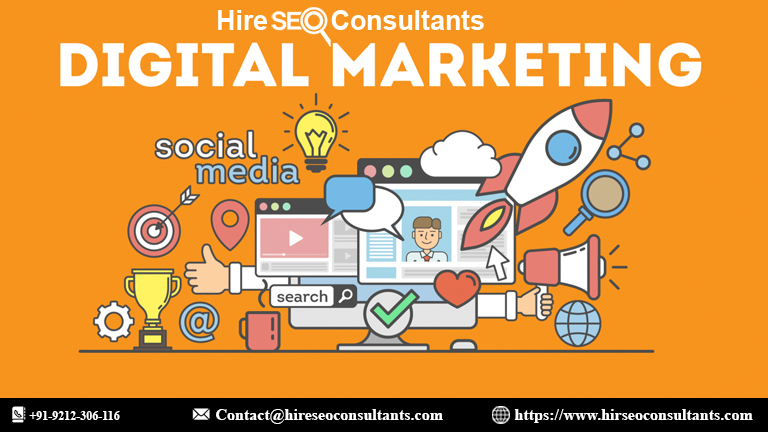From Concept to Digital Reality: The Power of a Digitized Logo
Discover how "From Concept to Digital Reality: The Power of a Digitized Logo" can transform your brand. Learn the process, benefits, and best practices for creating a versatile, professional, and scalable digital logo.

Introduction
In today’s digital-driven world, a company’s logo is much more than just a graphic—it’s the face of the brand. It conveys identity, professionalism, and values. But in an era where brands engage with customers across multiple platforms, having a static logo is no longer enough. This is where digitized logos come into play. From Concept to Digital Reality: The Power of a Digitized Logo explores how transforming a simple design into a high-quality digital format can elevate a brand's presence, ensuring consistency, adaptability, and long-term impact.
Whether you're launching a startup or refreshing an established brand, understanding the digitization process is crucial for staying competitive and relevant. Let’s dive into how digitized logos are reshaping modern branding strategies.
What is a Digitized Logo?
Understanding the Basics
A digitized logo is a design converted into a high-resolution, scalable digital format. This version of the logo is optimized for a wide range of uses—embroidery, printing, digital media, and more—without sacrificing quality.
Key Features of a Digitized Logo
-
Scalability: Easily resized without distortion or loss of detail.
-
Multi-Platform Compatibility: Works flawlessly across print, digital, and physical products.
-
Enhanced Precision: Every detail is finely tuned for different applications, such as embroidery or high-resolution printing.
From Concept to Digital Reality: The Power of a Digitized Logo
The Transformation Process
Turning a design concept into a fully functional digitized logo involves several critical steps:
-
Initial Design Creation
Begin with a clean and professional design. Vector files (such as AI, SVG, or EPS) are ideal because they ensure crisp edges and scalability. -
Choosing the Right Digitizing Software
Specialized software like Wilcom, Hatch, or Pulse converts the logo into a format suitable for various uses. For embroidery, this involves mapping out the stitches, density, and direction. -
Optimization for Different Applications
Logos must be optimized for their intended uses. For embroidery, adjustments to stitch types and thread thickness are necessary, while digital applications may require color adjustments and background transparency. -
Quality Testing
Before finalizing, the logo should be tested across different mediums (print, digital, fabric) to ensure it maintains clarity and visual integrity.
Benefits of Digitizing Your Logo
From Concept to Digital Reality: The Power of a Digitized Logo highlights several advantages:
-
Consistency Across Platforms: A digitized logo ensures that your brand looks professional and consistent everywhere—from websites and social media to merchandise and promotional materials.
-
Versatility: Use the same logo on business cards, embroidered uniforms, digital ads, and large-scale banners without worrying about quality loss.
-
Professionalism: A polished, digitized logo conveys trustworthiness and professionalism to customers.
-
Brand Recognition: A consistently displayed, high-quality logo strengthens brand recognition and recall.
Why Digitized Logos Matter in Modern Branding
Consistency in Visual Identity
Inconsistent branding can confuse customers and dilute brand trust. A digitized logo eliminates this risk by ensuring that every version of your logo—whether small or large, printed or digital—appears crisp and professional.
Adaptability for Multiple Uses
Digitized logos are designed for diverse applications:
-
Embroidery: Optimized for stitching on uniforms, hats, and promotional products.
-
Printing: Perfect for flyers, business cards, and packaging.
-
Digital Media: High-resolution versions for websites, apps, and social media profiles.
Scalability Without Sacrificing Quality
One of the biggest challenges in branding is resizing logos for different formats. A digitized logo can be scaled up for a billboard or down for a pen without losing detail.
Steps to Create a Digitized Logo
1. Start with a High-Quality Design
Invest in a professionally designed logo using vector formats to ensure clean lines and scalability.
2. Select Appropriate Digitizing Software
Choose software that suits your logo's intended applications. Popular options include:
-
Wilcom – Ideal for embroidery digitizing.
-
Adobe Illustrator – Great for creating scalable vector designs.
-
Hatch Embroidery Software – User-friendly for embroidery digitizing.
3. Optimize for Different Mediums
Adjust the logo’s resolution, stitch type, and color palette to suit digital media, print, and embroidery.
4. Conduct Rigorous Testing
Test the digitized logo across various platforms to ensure quality and consistency.
Common Mistakes to Avoid in Logo Digitization
1. Using Low-Resolution Files
Starting with a low-quality design leads to poor results. Always begin with high-resolution vector files.
2. Overcomplicated Designs
Highly detailed designs can lose clarity in small-scale uses or embroidery. Simplify intricate details for better results.
3. Ignoring Application-Specific Adjustments
Failing to adjust the design for embroidery or print can result in distorted logos. Optimize based on the intended application.
How Digitized Logos Empower Creative Marketing
Customizable for Seasonal Campaigns
Digitized logos can be easily modified for holiday promotions or special events.
Versatile for Merchandise and Apparel
They can be used on t-shirts, hats, bags, and more—expanding brand visibility.
Perfect for Digital Engagement
Dynamic logos can be integrated into video content, interactive apps, and social media graphics.
The Future of Branding with Digitized Logos
As branding continues to evolve, the demand for adaptable, high-quality logos will only grow. From Concept to Digital Reality: The Power of a Digitized Logo emphasizes that digitized designs are the future of visual branding. One essential aspect of this evolution is the ability to digitize logo for embroidery, allowing businesses to showcase their brand on various materials with precision and professionalism. This process ensures that logos are not only visually appealing but also versatile enough to be embroidered on apparel, accessories, and promotional products. Digitized logos provide businesses with the flexibility to adapt to emerging trends, technologies, and markets, making them a crucial tool for long-term brand success.
Conclusion
From Concept to Digital Reality: The Power of a Digitized Logo is undeniable. In today’s fast-paced market, having a versatile, professional, and scalable logo is not just beneficial—it’s essential. Digitized logos enable businesses to maintain consistent branding across digital platforms, print materials, and physical products.
By investing in a digitized logo, your business ensures adaptability, professionalism, and brand recognition in an increasingly competitive landscape. Don’t let your brand fall behind. Embrace the power of digitization and transform your logo into a dynamic tool that drives success.
What's Your Reaction?





















